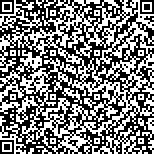| 引用本文: |
谢映, 刘慧慧, 曹徵良, 夏云, 朱沁泉, 胡国恒.基于肠道菌群和代谢组学探讨“脑肠共治”电针对孤独症大鼠的作用机制[J].湖南中医药大学学报,2024,44(5):828-837[点击复制] |
|
| |
|
|
| 本文已被:浏览 938次 下载 376次 |
| 基于肠道菌群和代谢组学探讨“脑肠共治”电针对孤独症大鼠的作用机制 |
| 谢映,刘慧慧,曹徵良,夏云,朱沁泉,胡国恒 |
| (湖南中医药大学第一附属医院, 湖南 长沙 410007;湖南中医药大学, 湖南 长沙 410208) |
| 摘要: |
| 目的 观察“脑肠共治”电针对孤独症大鼠的社交能力及对肠道菌群、代谢产物的影响。方法 采用丙戊酸钠腹腔注射法制备孤独症大鼠模型,选取造模成功的大鼠随机分为4组,每组10只,分别为模型组、基础电针组、针药结合组、脑肠共治电针组。另外选取10只正常大鼠为对照组。基础电针组予以电针百会、神庭、心俞;针药结合组在基础电针组的基础上再予以益生菌灌胃治疗;脑肠共治电针组在基础电针组基础上再结合电针足三里、曲池。均每日1次,连续4周。采用三箱社交实验评估行为学改变,16S rDNA测序分析肠道菌群分布情况,超高效液相色谱串联质谱分析血浆中的差异代谢组分,并结合Spearman相关性分析进行肠道菌群与代谢组学之间的关联分析。结果 与对照组相比,模型组大鼠社交能力和社交新颖性均减弱(P<0.01);与模型组相比,基础电针组、针药结合组、脑肠共治电针组的社交新颖性增强(P<0.01);与基础电针组比较,针药结合组、脑肠共治电针组社交新颖性增强(P<0.01)。肠道菌群研究发现,与对照组比较,模型组的弯曲菌门相对丰度上调,嗜黏蛋白阿克曼菌相对丰度下调;而与模型组相比,针药结合组、脑肠共治电针组的弯曲菌门相对丰度下调,嗜黏蛋白阿克曼菌相对丰度上调。LEfSe分析发现,脑肠共治电针组与模型组共筛选出嗜黏蛋白阿克曼菌等21个关键菌,如与模型组比较,脑肠共治电针组可上调嗜黏蛋白阿克曼菌、卷曲乳杆菌,同时下调梭状芽胞杆菌等。代谢组学分析共筛选出12个差异代谢物,通路分析显示,其主要与氨基酸代谢、磷酸盐代谢、嘌呤代谢、花生四烯酸代谢等通路相关。结论 电针百会、神庭、心俞、足三里、曲池对孤独症大鼠社交能力有明显的改善作用,调控肠道菌群如嗜黏蛋白阿克曼菌等菌属丰度,同时影响代谢物水平,且部分代谢物的改变与肠道菌群存在复杂相关性,可能与氨基酸代谢、磷酸盐代谢、嘌呤代谢、花生四烯酸代谢等通路相关。 |
| 关键词: 孤独症谱系障碍 电针 脑肠同治 肠道菌群 代谢组学 社交能力 |
| DOI:10.3969/j.issn.1674-070X.2024.05.016 |
| 投稿时间:2023-12-01 |
| 基金项目:湖南省中医药科研计划重点项目(A2023036);湖南省卫生健康委员会科研课题(202206010043);湖南省卫生健康委员会科研计划项目(D202306048765);湖南省中医药科研课题(B2023121)。 |
|
| Mechanism of action of electroacupuncture targeting both brain and intestine on autistic rats based on intestinal flora and metabolomics |
| XIE Ying, LIU Huihui, CAO Zhengliang, XIA Yun, ZHU qinquan, HU Guoheng |
| (The First Hospital of Hunan University of Chinese Medicine, Changsha, Hunan 410007, China;Hunan University of Chinese Medicine, Changsha, Hunan 410208, China) |
| Abstract: |
| Objective To observe the effects of electroacupuncture (EA) targeting both brain and intestine on the social ability, intestinal flora, and metabolites in autistic rats. Methods The autistic rat model was prepared by intraperitoneal injection of sodium valproate, the successfully modeled rats were randomized into model group, basic EA group, acupuncture-medicine group, and EA targeting both brain and intestine group, with 10 rats in each group. In addition, 10 normal rats were selected as control group. The basic EA group was given EA at "Baihui" (GV20), "Shenting" (GV24), and "Xinshu" (BL15) acupoints, the acupuncture-medicine group was treated with probiotics by gavage on the basis of the basic EA group, and the EA targeting both brain and intestine group was treated with EA at "Zusanli" (ST36) and "Quchi" (LI11) acupoints on the basis of the basic EA group, once a day, for 4 consecutive weeks. The behavioral changes were assessed by three-chamber social experiments, the intestinal flora distribution was analyzed by 16SrDNA sequencing, the differential metabolic components in plasma were analyzed by ultra-high performance liquid chromatography tandem mass spectrometry, and the correlation between intestinal flora and metabolomics was analyzed by Spearman. Results Compared with the control group, the social ability and social novelty of rats in the model group were weakened (P<0.01). Compared with the model group, the social novelty of the basic EA group, acupuncture-medicine group, and EA targeting both brain and intestine group was enhanced (P<0.01). Compared with the basic EA group, the social novelty of acupuncture-medicine group and the EA targeting both brain and intestine group was enhanced (P<0.01). The study of intestinal flora found that compared with the control group, the relative abundance of Campylobacter in the model group was up-regulated, while the relative abundance of Akkermansia muciniphila was down-regulated. Compared with the model group, the relative abundance of Campylobacter in the acupuncture-medicine group and the EA targeting both brain and intestine group was down-regulated, while the relative abundance of Akkermansia muciniphila was up-regulated. LEfSe analysis found that a total of 21 key bacteria were screened out in the EA targeting both brain and intestine group and the model group, such as compared with the model group, the EA targeting both brain and intestine group can up regulated Akkermansia muciniphila and Lactobacillus crispatus and down -regulated Clostridium. A total of 12 differential metabolites were screened out by metabolomics analysis, and pathway analysis showed that they were mainly related to amino acid metabolism, phosphate metabolism, purine metabolism, arachidonic acid metabolism, and other pathways. Conclusion EA at "Baihui" (GV20), "Shenting" (GV24), "Xinshu" (BL15), "Zusanli" (ST36), and "Quchi" (LI11) acupoints can significantly improve the social ability of autistic rats, regulate the abundance of intestinal flora such as Akkermansia muciniphila, and affect the level of metabolites at the same time. Moreover, there is a complex correlation between the changes of some metabolites and intestinal flora, which may be related to amino acid metabolism, phosphate metabolism, purine metabolism, arachidonic acid metabolism, and other pathways. |
| Key words: autism spectrum disorder electroacupuncture treatment targeting both brain and intestine intestinal flora metabolomics social ability |
|

二维码(扫一下试试看!) |
|
|
|
|




